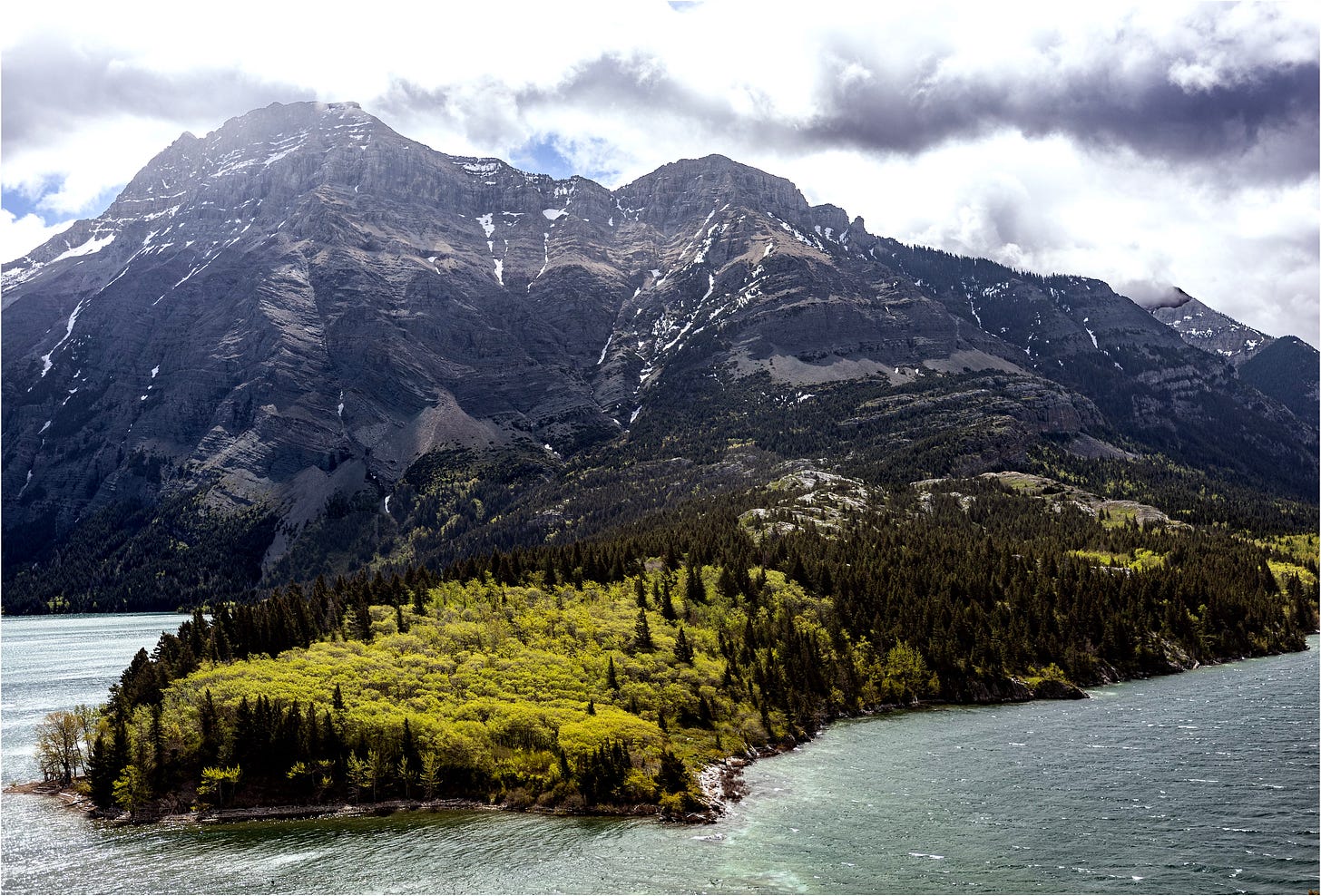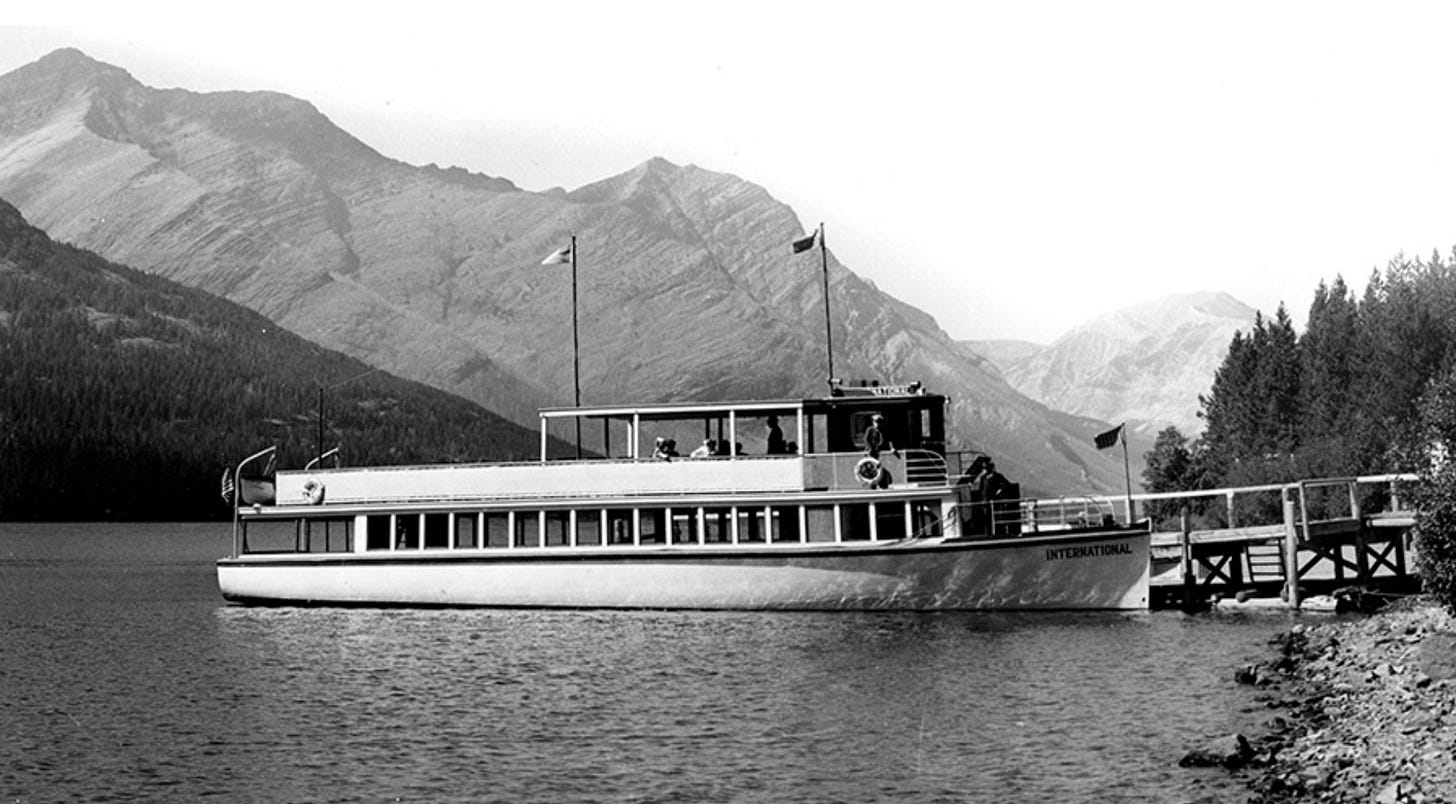A royal view without the royals/Una vista regale senza i reali
A historic hotel, a cross-border park (UNESCO), and the windswept spirit of Waterton Lakes/Un hotel storico, un parco transfrontaliero (UNESCO) e lo spirito ventoso di Waterton Lakes (IT segue EN)
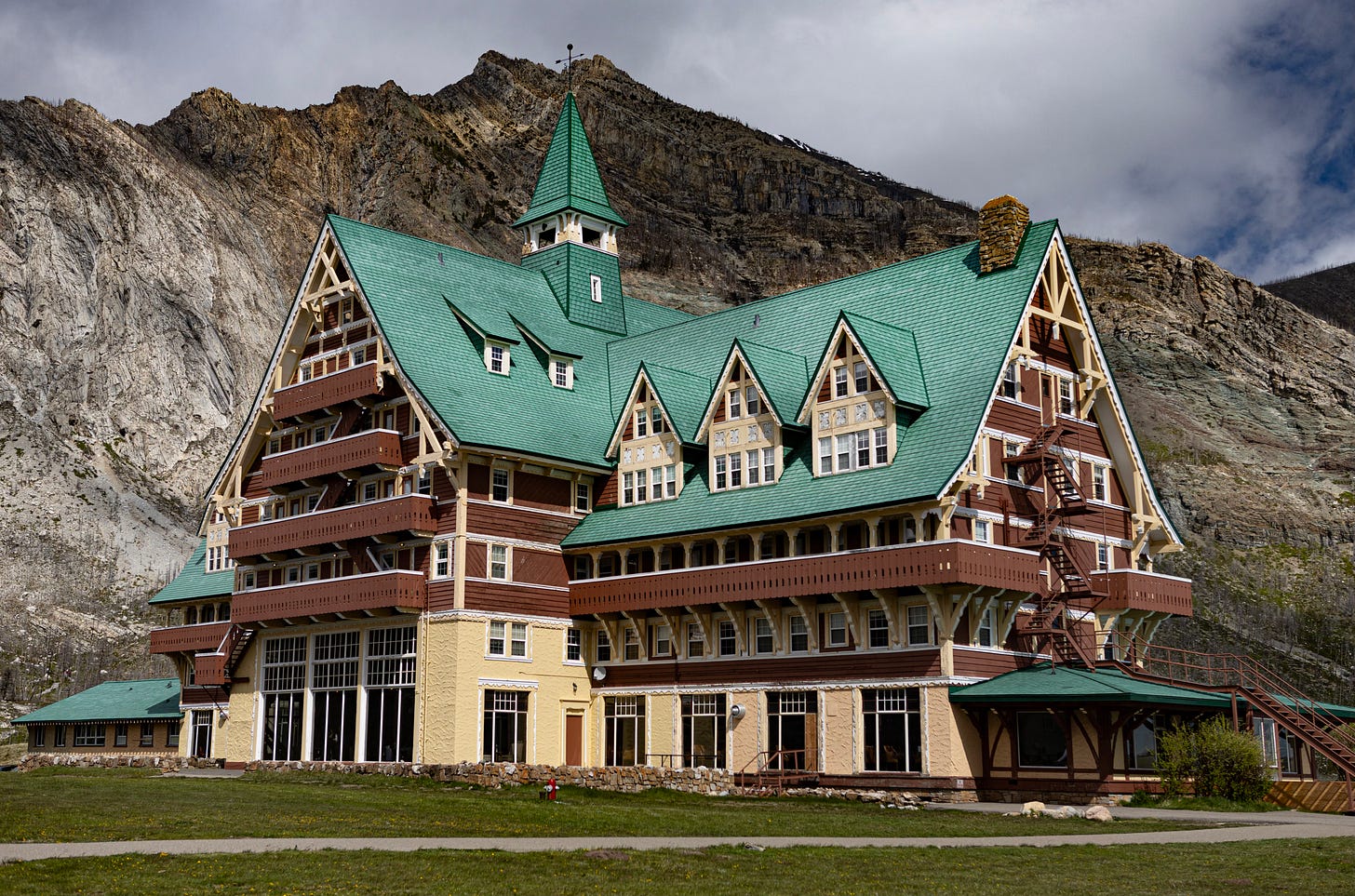
It was purely by chance that, on the day Canada celebrates Queen Victoria (Victoria Day), we found ourselves near Waterton Lakes National Park in Alberta. And so the idea came to us to visit the symbol of the area, a historic hotel bearing the name of a British royal—despite never having hosted one. That said, the Prince of Wales Hotel has plenty of stories for those willing to listen. We heard some of them in a conversation with the hotel’s manager, Bronson Albano.
Stories in the Wind
Bronson arrived here in 2014 as a receptionist, gradually working his way up to the top. He now knows every detail of this majestic chalet, built in 1927 atop one of the windiest lakeside promontories in the world. “Gusts here can reach up to 200 kilometers per hour, blowing straight down from Montana and sweeping through the valley,” he explains.
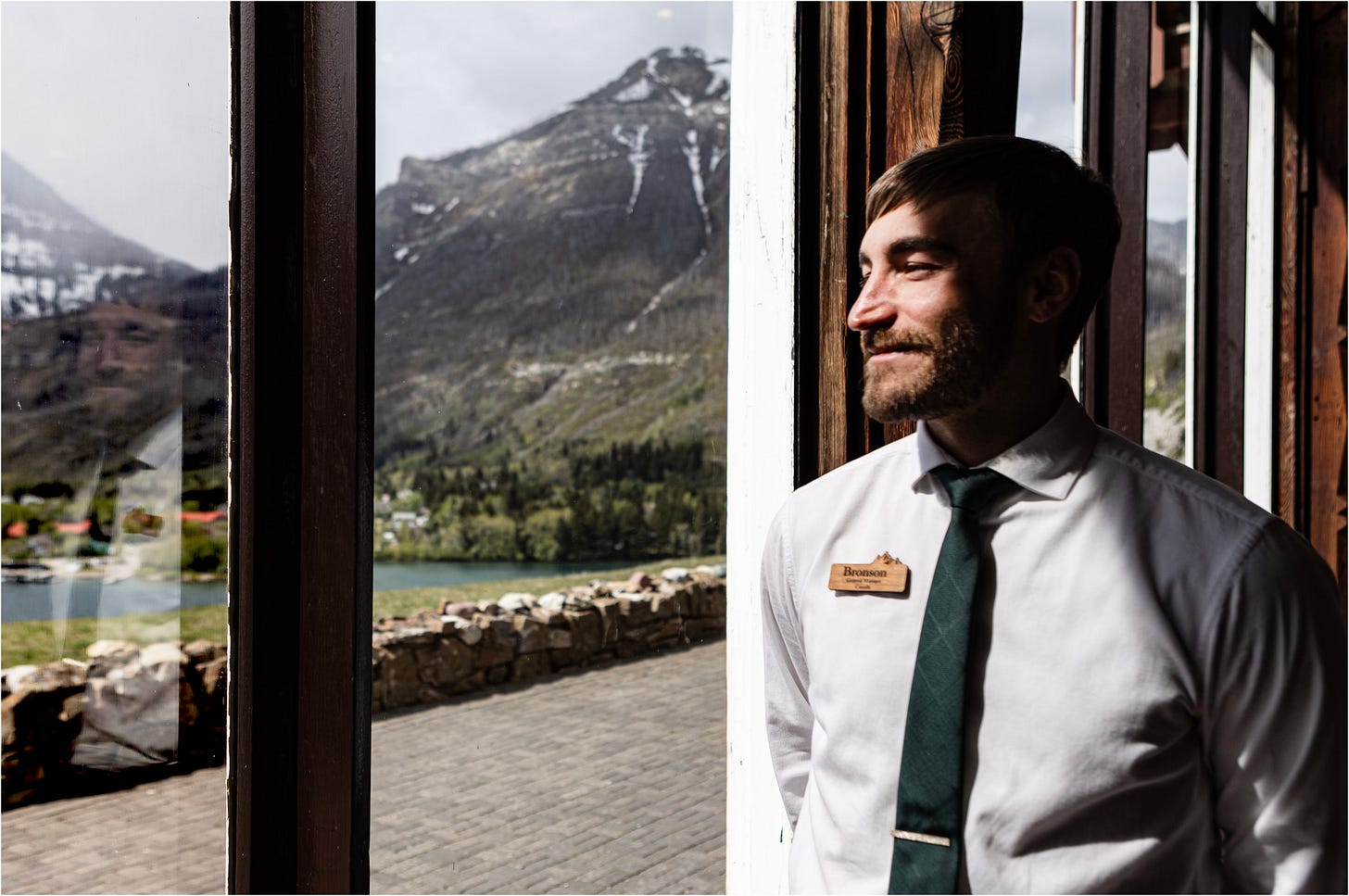
Yet the view—framed by the hotel’s large protective windows—is nothing short of breathtaking. That’s what Louis Hill, president of the Great Northern Railway and the visionary behind the hotel’s construction, hoped would keep tourists in North America, convincing them there was no need to cross the Atlantic to see alpine scenery. “His motto was See America First,” says Bronson.
Prohibition and a Border Loophole
But what truly secured the hotel’s success—built by Canadian craftsmen and designed to rival the grand Swiss chalets—was prohibition. While the United States was still dry, Waterton, just across the border, was wet. Hill took full advantage. “He would have guests ride horseback from the Many Glacier Hotel in Montana to the shores of Upper Waterton Lake,” Bronson explains. “From there, they’d board the Motor Vessel International—also built by the Great Northern Railway—and travel here, where they could indulge for a few nights. Yes, the foundations of this hotel rest on alcohol.”
The Prince Who Never Came
The hotel was named in hopes of attracting the then Prince of Wales—future King Edward VIII—during his Canadian tour, but the royal never came. King Charles, it seems, has yet to make up for that absence—though his upcoming visit to Canada to deliver the Speech from the Throne on May 27 might offer the perfect opportunity. In any case, just as they did in the past, the hotel staff still wear kilts in the Royal Stewart tartan, a nod to both the Crown and the region’s rustic charm
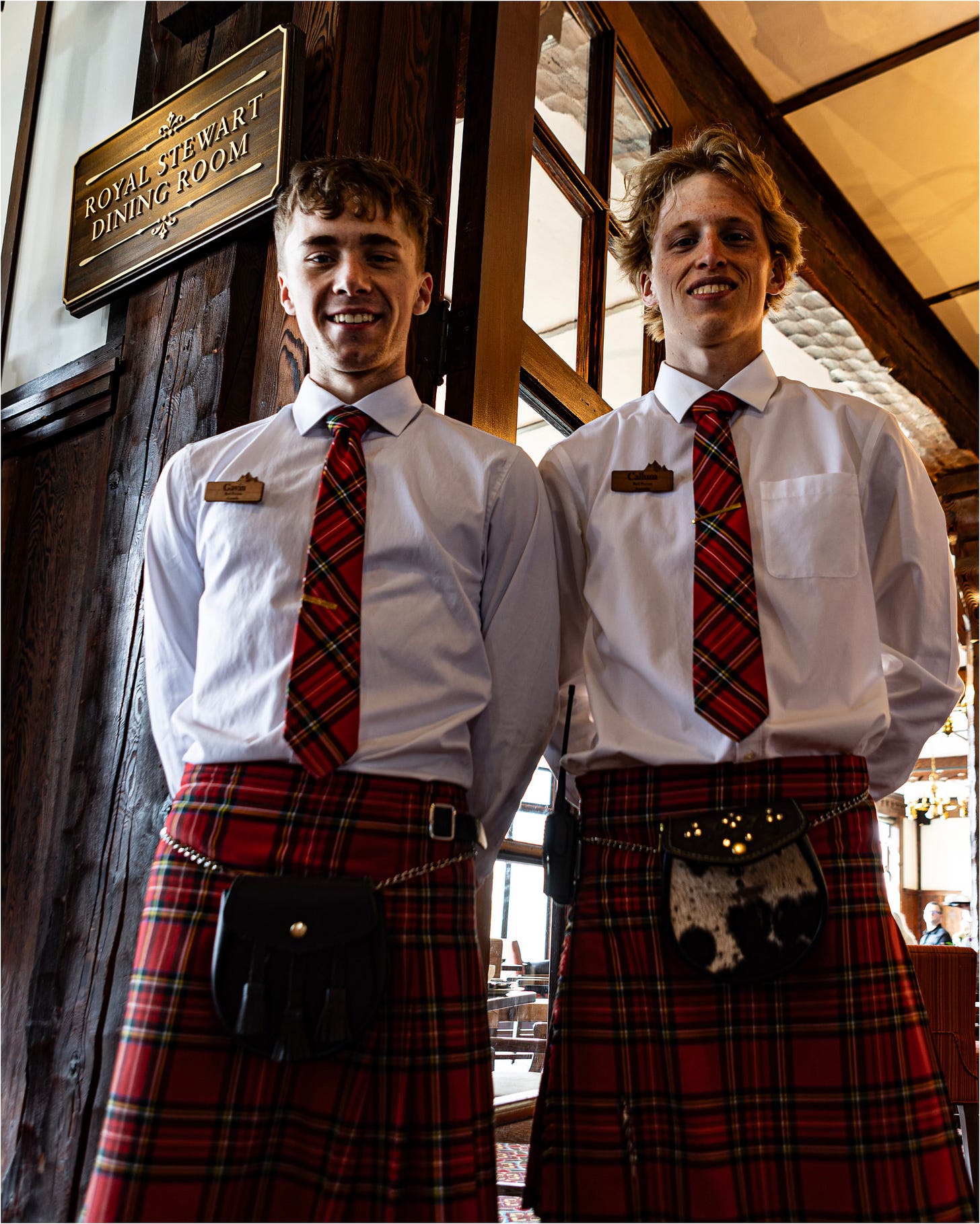
A Birthplace of Cross-Border Peace
What truly makes this place special, however, is the role it played in international diplomacy. It was here, in 1932, that Canadian and American Rotarians met to officially establish the Waterton-Glacier International Peace Park—the world’s first cross-border peace park, a symbol of friendship between nations and shared environmental stewardship.
Despite the political tensions between Canada and the U.S. stirred by Trump’s second term, the spirit of camaraderie endures. “We’re already nearly fully booked for the summer, and most of our guests are American,” Bronson says. “They come to support us. And we’re happy to see our American friends return. It’s nice to know this park continues to stand for the friendship between the United States and Canada.”

"Vedi prima l'America": Una vista regale senza i reali
E’ stato per puro caso che nel giorno in cui in Canada si festeggia la Regina Victoria (Victoria Day) ci trovassimo nei pressi del parco nazionale di Waterton Lakes, in Alberta. E così ci è venuta l’idea di porgere una visita al simbolo del luogo, un albergo storico che porta il nome di un reale della corona britannica senza mai averne ospitato uno. A dispetto di ciò, il Prince of Wales Hotel ha molto da raccontare a chi ha voglia di ascoltare la sua storia. Noi lo abbiamo fatto tramite una chiacchierata con il direttore dell’albergo, Bronson Albano.
Storie nel vento
Arrivato qui nel 2014 come receptionist prima di scalare tutti i ruoli fino a quello di direttore, Bronson conosce ogni dettaglio di questo maestoso chalet costruito nel 1927 su uno dei promontori lacustri più ventosi al mondo. “Le raffiche qui arrivano a toccare anche i 200 chilometri orari, scendendo dritte dal Montana e attraversando tutta la valle.” Ma la vista, dietro le grandi vetrate protettive, rimane impagabile. Ed è con quella che Louis Hill, il Presidente della Great Northern Railway fautore del progetto di costruzione del Prince of Wales, pensò di trattenere i turisti nel continente nordamericano, convincendoli che non era necessario attraversare l’Atlantico per ammirare panorami da alpeggio alpino. “Il suo motto era See America First,” racconta Bronson.
Il proibizionismo e una scappatoia al confine
Ma quello che fece la fortuna dell’albergo, costruito da maestranze canadesi e progettato per competere con i lussuosi chalet svizzeri, fu il proibizionismo, ancora in vigore negli Usa mentre Waterton, appena oltre il confine, era terra libera. Così Louis Hill ne approfittò. “Faceva arrivare i suoi ospiti a cavallo dal Many Glacier Hotel, in Montana, fino alle rive dell’Upper Waterton Lake,” spiega Bronson. “Da lì prendevano il Motor Vessel International, anch’esso costruito dalla Great Northern Railway, e salivano fin qui, dove potevano passare qualche notte di eccessi. E si, le fondamenta di questo hotel poggiano sull’alcol.”
Il principe che non arrivò mai
ll nome dell’hotel fu pensato per attirare l’allora principe di Galles—futuro Re Edoardo VIII—durante il suo tour canadese, ma il sovrano non arrivò mai. Re Carlo, a quanto pare, non ha ancora rimediato alla dimenticanza—anche se la sua prossima visita in Canada per tenere il discorso del trono all’apertura del Parlamento il 27 maggio potrebbe essere l’occasione giusta. Come che sia, il personale dell’albergo oggi come allora indossa i kilt con il tartan Royal Stewart in onore della Corona ma anche dello spirito rustico del luogo.

Il luogo di nascita della pace transfrontaliera
Quello che però rende questo luogo davvero speciale è il ruolo significativo che ha giocato nella storia della diplomazia internazionale. Fu proprio qui, infatti, che nel 1932 i rotariani canadesi e americani si incontrarono per formalizzare la nascita del Waterton-Glacier International Peace Park, il primo parco della pace transfrontaliero al mondo, simbolo di amicizia tra le nazioni e di gestione ambientale condivisa. Le tensioni politiche tra il Canada e gli Usa suscitate dal secondo mandato di Trump non sembrano intaccato lo spirito di fratellanza di questo luogo. “Siamo già quasi al completo per l’estate, e la maggior parte dei nostri ospiti è americana”, ha detto Albano. «Vengono per sostenerci. E noi siamo felici che i nostri amici americani tornino. È bello sapere che questo parco continua a rappresentare l’amicizia tra Stati Uniti e Canada.”
